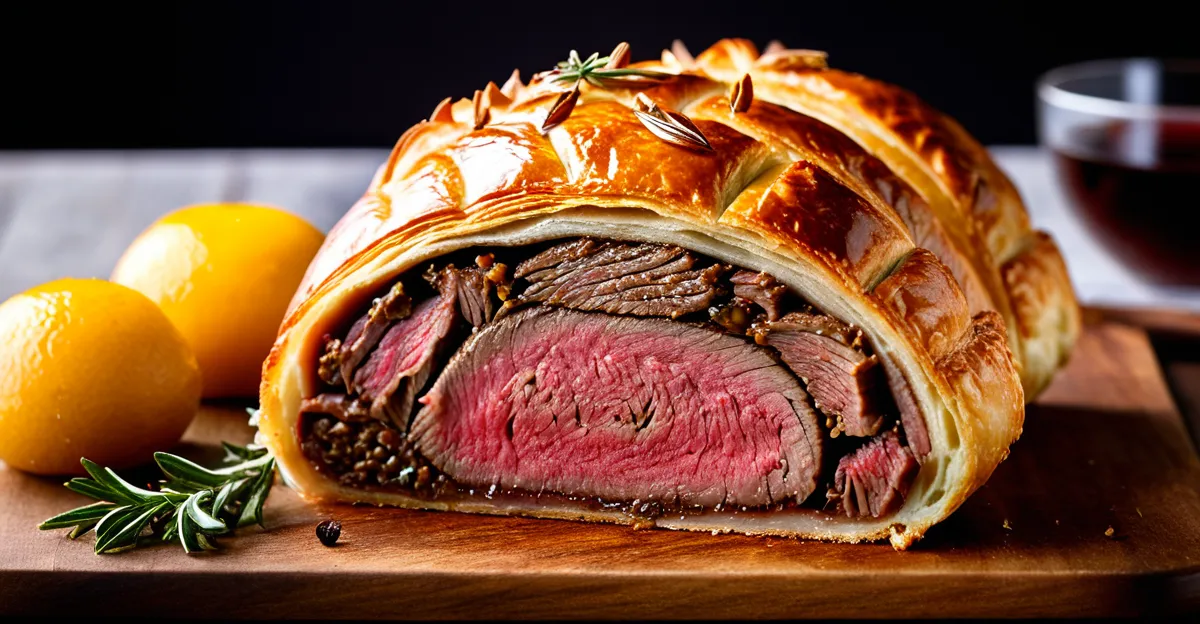Essential Techniques for Achieving a Flaky Beef Wellington Crust
Achieving a flaky beef Wellington crust hinges on mastering pastry flakiness through precise techniques. The first step is selecting the ideal pastry type. Traditional puff pastry is preferred because its layered structure creates the desired crispness and rise. Avoid ready-made, softened doughs; instead, opt for high-quality, cold puff pastry sheets for optimal results.
Keeping ingredients cold is another crucial secret of beef Wellington crust secrets. Cold butter within the pastry dough ensures moisture pockets that vaporize during baking, causing the layers to separate and create flakiness. Similarly, chilling the beef Wellington dough at every stage prevents the butter from melting prematurely, preserving this layered effect. Handling pastry quickly and minimizing warmth from hands aids this process.
In parallel : What Makes Traditional British Cuisine So Unique?
Resting the dough between steps cannot be overstated. Allowing the dough to rest in the refrigerator after rolling and folding relaxes the gluten, preventing shrinkage and toughening. This rest period ensures your beef Wellington crust remains tender and flaky after baking. Following these essential techniques guarantees a beautifully textured crust, elevating your whole beef Wellington experience.
Step-by-Step Pastry Preparation for Beef Wellington
Mastering puff pastry preparation is essential for a flawless beef Wellington crust. Start by rolling the cold puff pastry evenly to about 3-4mm thickness. This thickness balances pastry flakiness with structural support; too thin risks tearing, too thick results in doughy layers. During beef Wellington pastry steps, maintain consistent pressure while rolling to avoid compacting the layers, which would reduce flakiness.
Additional reading : How do you create a perfect Welsh rarebit with a modern twist?
Handling the pastry with care is crucial. Keep the pastry chilled between steps to prevent the butter layers from melting and ensure proper lifting during baking. Wrapping pastry in cling film and refrigerating it after rolling maintains the cold temperature needed for optimal puff pastry preparation. This also prevents sogginess that can compromise the beef Wellington crust.
Applying an egg wash just before baking adds a golden, glossy finish that enhances the texture and creates an appealing crust. Use a light, even coating to avoid pooling, which may cause uneven browning. Following these expert pastry techniques helps achieve a crisp, flaky crust that complements the tender beef interior perfectly.








